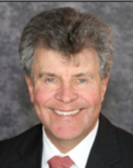Date
Cost
Free and open to the public
Location
Harris Corporation Engineering Center, Room 101A
Description
Abstract:
Following the irrepressible commercial drive over the last 50 years to always buy a (S)TEM with better resolution than our previous model, we now operate microscopes that can routinely image and identify individual atoms in thin, solid foils. On our way to such sub-Å imaging and analytical resolution, we have created an instrument with extraordinary capabilities, most of which are generally under used or perhaps not even used at all. It is worth noting that today’s best (S)TEMs can discern simultaneously, from the micrometer to the (sub) atomic scale, the three factors that control the principal properties of solids: the crystal structure (or lack thereof), the defect structure (or lack thereof) and the atomic chemistry (elemental, bonding…). A modern (S)TEM is the most versatile materials-characterization tool. Over 40 different imaging, diffraction and spectroscopic signal outputs are all fully quantifiable and can all be simulated in a computer.
We are at the point where a reasonable answer to “what’s next?” is that we step back from the resolution frontier and, instead, ask “what is the total information that can be extracted from a given specimen in a given time with the least damage to the specimen?” Given the accuracy of current computer simulation methods, the (S)TEM should be viewed as a data-generating tool rather than an instrument to master. This approach will relieve us of the inexorable need to create the thinnest possible specimens, which are most susceptible to preparation artifacts and surface effects. It might even become feasible to write successful proposals seeking a new (S)TEM with worse resolution than our previous instrument. This talk will offer further justification for such a backward-looking approach.
Biography:
Dr. David B. Williams is The Monte Ahuja Endowed Dean’s Chair, Executive Dean of the seven professional colleges and Dean of the college of engineering at The Ohio State University. The professional colleges comprise over 26,000 students, 3000 faculty and staff members with an annual budget of $660M. As Dean of Engineering, he is responsible for the strategic vision, mission and goals of the college, oversees the education of more than 10,000 students and leads a research program that expends in excess of $120M annually. Prior to coming to OSU, Williams was the fifth president of the University of Alabama in Huntsville from 2007 to 2011. As president, he was instrumental in leading UAHuntsville into the Carnegie Foundation Tier-One research classification. Before joining UAHuntsville, Williams spent 31 years at Lehigh University in Bethlehem, PA. From 1980 to 1998, he directed Lehigh’s Electron Microscope Laboratory and Microscopy School. He was Lehigh’s Chair of Materials Science and Engineering from 1992-2000 and Vice Provost for Research from 2000-2006. Williams was awarded four degrees (B.A., M.A., Ph.D., and Sc.D.) and four Blues (rugby and athletics) from the University of Cambridge. A Fellow of six professional societies, he has given almost 300 invited talks in 28 countries. He has edited Acta Materialia and Journal of Microscopy, is author, co-author or editor of 12 textbooks and conference proceedings including the well-known text Transmission Electron Microscopy with C. Barry Carter (2nd Ed. Springer, 2009). He has published more than 400 journal and conference papers on electron-microscopy studies of metals, alloys and other materials.
Presenter

David B. Williams, Ph.D., Sc.D.
Dean, College of Engineering
The Ohio State University
Contact
Tengfei Jiang Materials Science and Engineering 407-823-2284 Tengfei.Jiang@ucf.edu